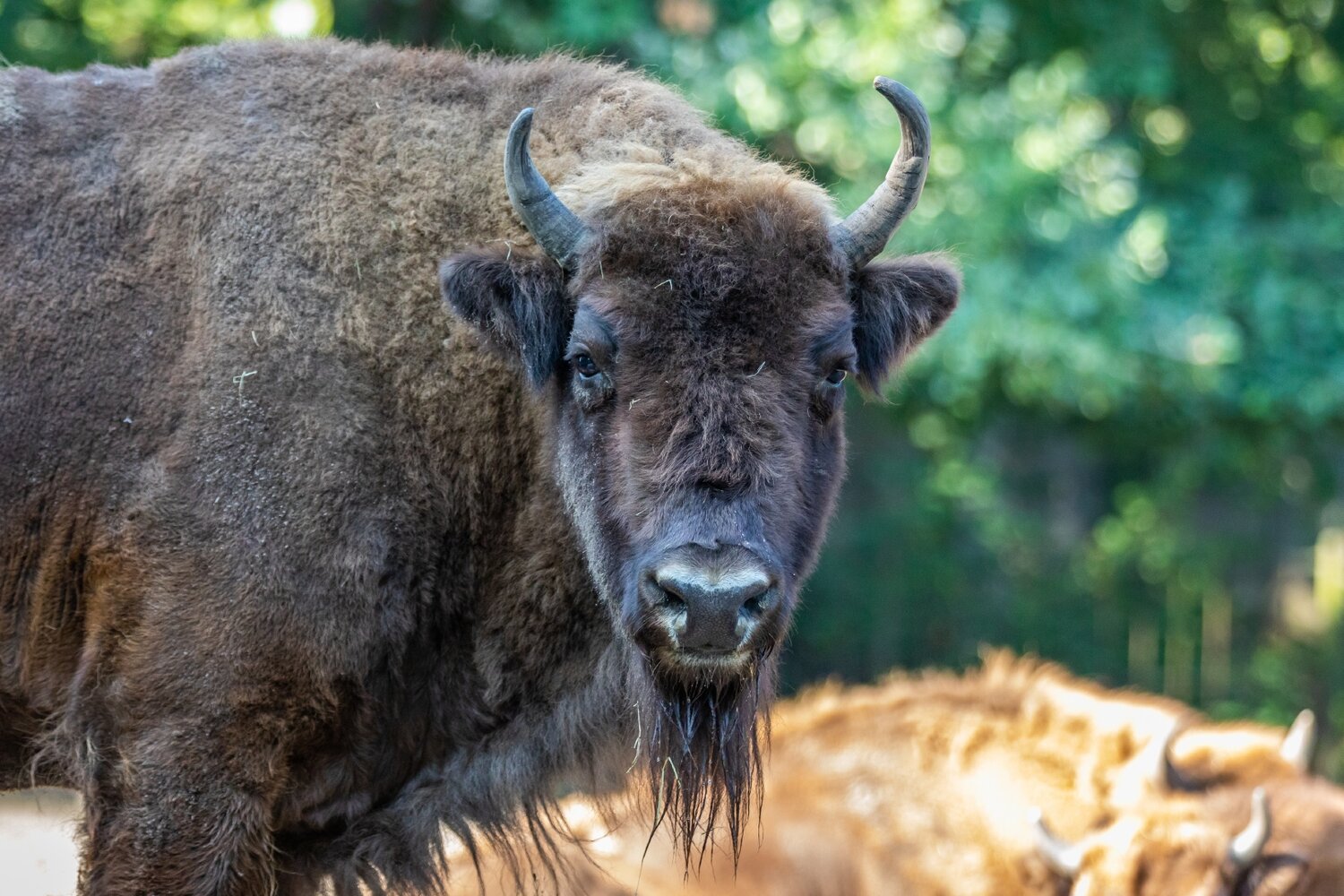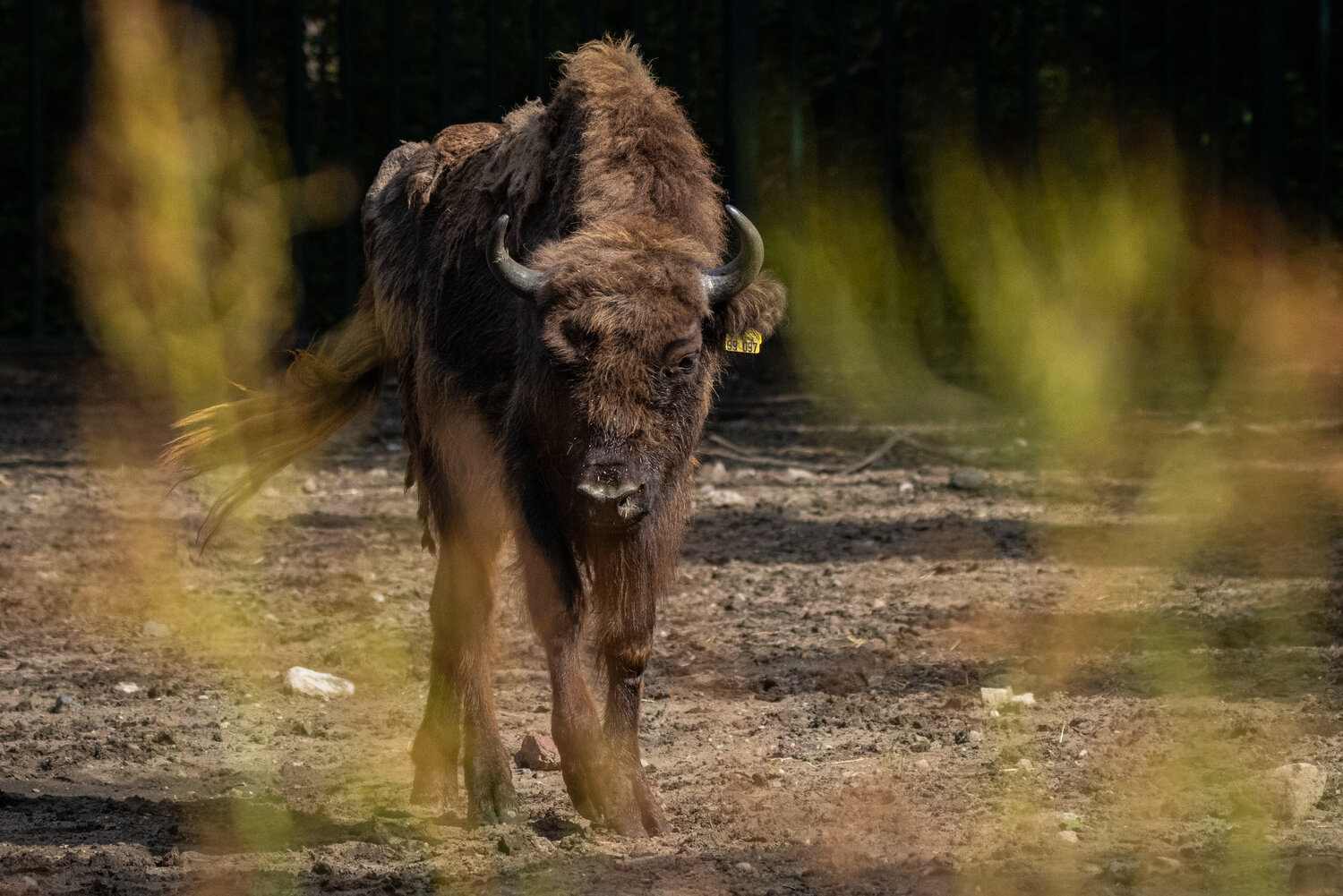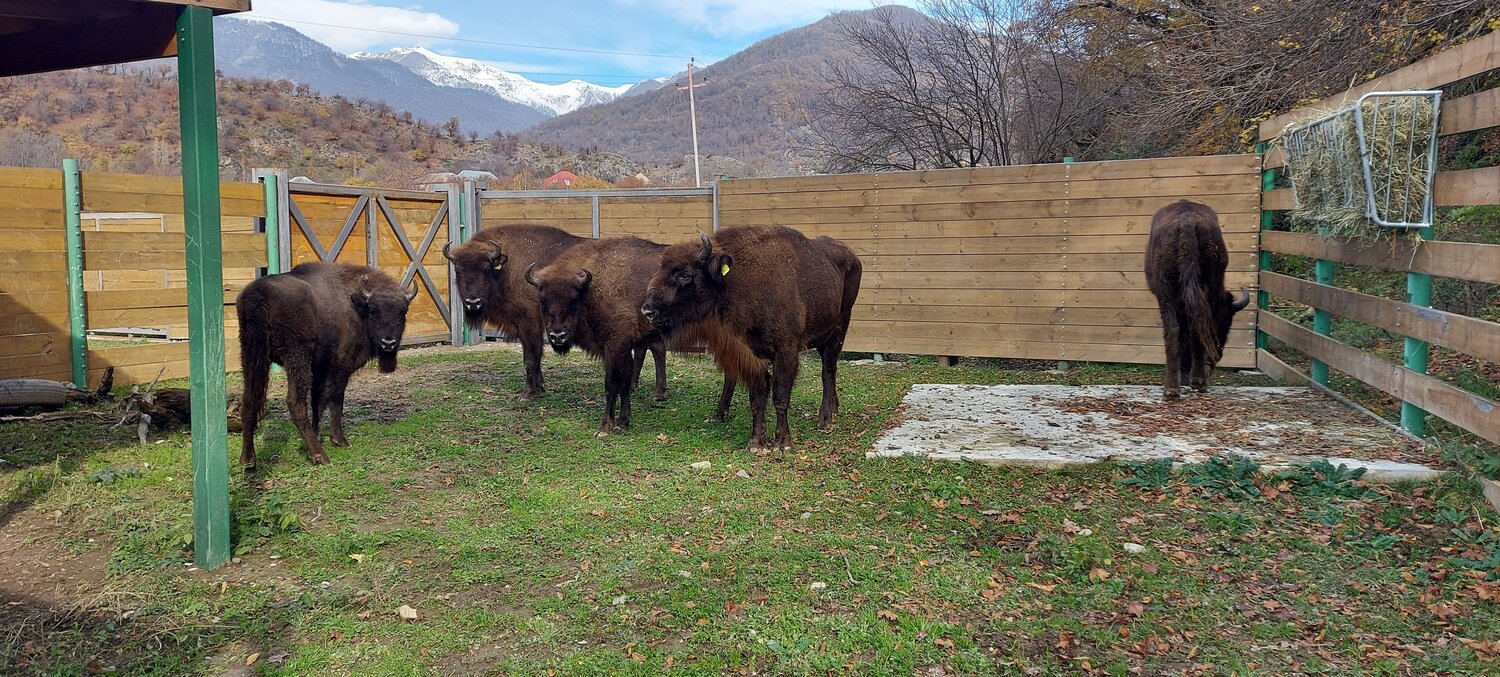The European bison was declared extinct in the wild over 90 years ago, after the shooting of the last individual in the Caucasus. Today, thanks to reintroduction efforts, these mighty beasts can once again be seen roaming the Caucasus. Five more European bison have now been safely transported from European zoos to a reintroduction station in the Shahdag National Park in northern Azerbaijan. Among them is our very own two-year-old bull Beppo, who was born at Zoo Berlin. Since 2019, Berlin’s zoos have been working with the WWF to campaign for the reintroduction of the endangered bovines.
“Due to their considerable food intake, these bulky herbivores have a big impact on the vegetation in their habitat,” says WWF expert Aurel Heidelberg, going on to explain the benefits: “Their grazing creates clearings in the forest, which allows sunlight to reach the ground. This, in turn, supports natural processes and growth in mountain forests, providing niches for many animal and plant species.” The reintroduction of bison is therefore making a significant contribution to the preservation of biological diversity in the Caucasus. This year, however, the important project was almost thwarted by the coronavirus pandemic. The big trip to the Caucasus had originally been planned for spring 2020, but the whole operation had to be postponed due to the uncertain global situation. However, on 23 November, just before the onset of the region’s freezing cold winter, the five shaggy giants were finally able to set off on their long journey.
Beppo, the Berlin-born male, was accompanied by four females who had moved to Zoo Berlin from Rostock Zoo, Bernburg animal park, and Belgian wildlife park Domaine des Grottes de Han a few months ago in preparation for the trip. Over the next few months, the herd will get accustomed to their new home in a fenced-off area before being released in the foothills of the Caucasus Mountains next spring. “The bison have been fitted with modern GPS tracking collars so that we can trace their precise whereabouts and keep an eye on them from a distance as they embark on their new life,” explains Tierpark curator Dr Florian Sicks. “It was very important for us to support the project again this year – despite all the challenges we are currently facing,” says Zoo and Tierpark Director Dr Andreas Knieriem. “Even though other topics are dominating the news at the moment, endangered animals still need our help.” The project is a joint initiative of Azerbaijan’s Ministry of Ecology, the WWF, EAZA (European Association of Zoos and Aquariums), and national partners on the ground. Funding bodies include the German Federal Ministry for Economic Cooperation and Development (BMZ), via the KfW development bank.
Background:
The European bison was hunted to extinction in the wild by humans, with the last surviving animals shot in the Caucasus in 1927. It was thanks to the presence of a few individuals kept in zoos that the bison was saved from total extinction. In order to ensure the survival of the species, a group of European zoo directors and scientists founded the Society for the Protection of the European Bison in August 1923 at Zoo Berlin. This joint effort was the forerunner of many of today’s conservation breeding programmes for endangered species. Zoo Berlin has been home to European bison since 1872. The Tierpark has also made a considerable contribution to the species’ conservation ever since it opened in 1955. To date, more than 200 European bison have been born at Berlin’s two zoos. European bison are currently classified as “Vulnerable” on the IUCN Red List of Threatened Species.


